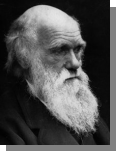Evolution, Jung, and Theurgy:
II. Evolutionary Neuroethology and the Archetypes
A. Evolutionary Neuroethology
 Ethology
studies animal behavior, and neuroethology studies the neural
structures subserving animal behavior. Evolutionary
neuroethology, then, studies the evolution of these neural
structures. This discipline may seem remote indeed from
Neoplatonism, but I will argue for its relevance.
Ethology
studies animal behavior, and neuroethology studies the neural
structures subserving animal behavior. Evolutionary
neuroethology, then, studies the evolution of these neural
structures. This discipline may seem remote indeed from
Neoplatonism, but I will argue for its relevance.
We begin with the observation that there are perceptual and
behavioral structures characteristic of each species; these dynamical
structures are commonly called instincts. Further, these innate
structures are coupled to the species’ environment of evolutionary adaptedness;
this is the term evolutionary biologists use to refer to the
environment in which the species has evolved and to which it has become
adapted through natural selection. These innate
perceptual-behavioral structures are common to all members of the
species and change very slowly (at evolutionary timescales).
As a species, Homo sapiens
also has innate perceptual-behavioral structures, although there is
scientific disagreement about what, specifically, they are. It is
fundamentally an empirical question, although often distorted by
ideology. For my argument, all that is essential is that we grant
that such structures exist.
 The
instincts define a life-cycle pattern for each member of the species,
which unfolds through the developmental program encoded in the
genome. That is, the phylogenetic pattern, encoded in the genome, is expressed ontogenetically
by the individual’s development in, and interaction with, its
environment. A particular organism’s environment may differ
from its species’ environment of evolutionary adaptedness, which
is especially the case with modern humans.
The
instincts define a life-cycle pattern for each member of the species,
which unfolds through the developmental program encoded in the
genome. That is, the phylogenetic pattern, encoded in the genome, is expressed ontogenetically
by the individual’s development in, and interaction with, its
environment. A particular organism’s environment may differ
from its species’ environment of evolutionary adaptedness, which
is especially the case with modern humans.
The instinctual patterns of behavior are potentiated at various times in an organism’s life, but are activated by an innate releasing mechanism when the corresponding releaser or sign stimulus
is present. For example, in many animals mating behavior is
potentiated at sexual maturity, but activated by a releaser such as an
estrus-related pheromone.
As a species, Homo sapiens
also has innate perceptual-behavioral structures, although there is
scientific disagreement about what, specifically, they are. It is
fundamentally an empirical question, although often distorted by
ideology. For my argument, all that is essential is that we grant
that such structures exist.
(continue to next page)
 Go to table of contents
Go to table of contents
 Return to MacLennan’s home page
Return to MacLennan’s home page
 Send mail to Bruce MacLennan / MacLennan@cs.utk.edu
Send mail to Bruce MacLennan / MacLennan@cs.utk.edu
 This page is www.cs.utk.edu/~mclennan/papers/EJT/IIA.html
This page is www.cs.utk.edu/~mclennan/papers/EJT/IIA.html
Last updated: 2006-04-21.
 Ethology
studies animal behavior, and neuroethology studies the neural
structures subserving animal behavior. Evolutionary
neuroethology, then, studies the evolution of these neural
structures. This discipline may seem remote indeed from
Neoplatonism, but I will argue for its relevance.
Ethology
studies animal behavior, and neuroethology studies the neural
structures subserving animal behavior. Evolutionary
neuroethology, then, studies the evolution of these neural
structures. This discipline may seem remote indeed from
Neoplatonism, but I will argue for its relevance. The
instincts define a life-cycle pattern for each member of the species,
which unfolds through the developmental program encoded in the
genome. That is, the
The
instincts define a life-cycle pattern for each member of the species,
which unfolds through the developmental program encoded in the
genome. That is, the  Return to MacLennan’s home page
Return to MacLennan’s home page Send mail to Bruce MacLennan / MacLennan@cs.utk.edu
Send mail to Bruce MacLennan / MacLennan@cs.utk.edu  This page is www.cs.utk.edu/~mclennan/papers/EJT/IIA.html
This page is www.cs.utk.edu/~mclennan/papers/EJT/IIA.html